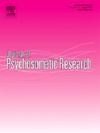白癜风患者焦虑的异质性:以青少年为重点的系统回顾和定量分析
IF 3.3
2区 医学
Q2 PSYCHIATRY
引用次数: 0
摘要
虽然焦虑已成为白癜风患者的普遍合并症,但对其与疾病关系的全面调查,包括最近的发现,仍然难以捉摸。目的本研究旨在通过定量综合方法对人群中焦虑与白癜风的关系进行系统综述,重点是青少年。方法对四个主要数据库进行系统检索,检索时间从数据库建立到2025年4月30日。使用Stata 18.0进行定量分析,采用亚组分析和敏感性分析来探索和解决合并结果的异质性。结果共对26项研究进行了评估,显示33.5%的白癜风患者存在焦虑。合并结果显示,与对照组相比,这些患者的焦虑风险增加了1.84倍(95% CI [1.50, 2.26], P <;0.001)。亚组分析发现了显著的年龄依赖性风险梯度,儿童和青少年队列显示出更大的脆弱性(OR = 2.77, 95% CI [1.80-4.26], P <;0.001),与成年人群相比(OR = 1.67, 95% CI [1.25-2.22], P <;0.001)。同时,白癜风患者的平均焦虑评分明显高于对照组(SMD = 1.26, 95% CI [0.09, 2.43], P = 0.034)。结论白癜风与焦虑在不同年龄段均存在相关性,这有助于提高医生和患者对白癜风相关焦虑的认识。未来的研究应集中在标准化的评估和机制背后的焦虑-白癜风的关系,以告知综合治疗策略,特别是对青少年。然而,由于焦虑测量方法的广泛多样性和研究之间的高度异质性,我们的结果应该谨慎解释。本文章由计算机程序翻译,如有差异,请以英文原文为准。
Heterogeneity of anxiety in vitiligo: A systematic review and quantitative analysis with a focus on adolescents
Background
Although anxiety has emerged as a prevalent comorbidity among vitiligo patients, a comprehensive investigation into its relationship with the disorder, incorporating recent discoveries, remains elusive.
Objective
This study aims to conduct a systematic review with quantitative synthesis examining the anxiety-vitiligo relationship across populations, with an emphasis on adolescents.
Methods
A systematic search was conducted across four major databases, spanning their inception to April 30, 2025. Quantitative analysis was performed using Stata 18.0, employing subgroup and sensitivity analyses to explore and address the heterogeneity across the pooled results.
Results
A total of 26 studies were evaluated, revealing that anxiety is present in 33.5 % of patients with vitiligo. The pooled results indicated a 1.84-fold elevated risk of anxiety in these patients in comparison to controls (95 %CI [1.50, 2.26], P < 0.001). Subgroup analyses identified a significant age-dependent risk gradient, with the children and adolescent cohort demonstrating substantially greater vulnerability (OR = 2.77, 95 %CI [1.80–4.26], P < 0.001) compared to adult populations (OR = 1.67, 95 %CI [1.25–2.22], P < 0.001). Meanwhile, vitiligo patients exhibited significantly higher mean anxiety scores than controls (SMD = 1.26, 95 %CI [0.09, 2.43], P = 0.034).
Conclusions
Our findings show that vitiligo and anxiety are related across varieties of age groups, which may raise awareness of the regarding the anxiety associated with vitiligo among physicians and patients. Future research should focus on standardized assessments and mechanisms underlying the anxiety-vitiligo relationship to inform comprehensive treatment strategies, particularly for adolescents. However, our results should be interpreted cautiously due to the broad diversity of anxiety measurement methods and the high level of heterogeneity across studies.
求助全文
通过发布文献求助,成功后即可免费获取论文全文。
去求助
来源期刊
CiteScore
7.40
自引率
6.40%
发文量
314
审稿时长
6.2 weeks
期刊介绍:
The Journal of Psychosomatic Research is a multidisciplinary research journal covering all aspects of the relationships between psychology and medicine. The scope is broad and ranges from basic human biological and psychological research to evaluations of treatment and services. Papers will normally be concerned with illness or patients rather than studies of healthy populations. Studies concerning special populations, such as the elderly and children and adolescents, are welcome. In addition to peer-reviewed original papers, the journal publishes editorials, reviews, and other papers related to the journal''s aims.

 求助内容:
求助内容: 应助结果提醒方式:
应助结果提醒方式:


